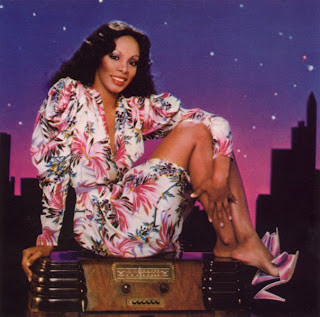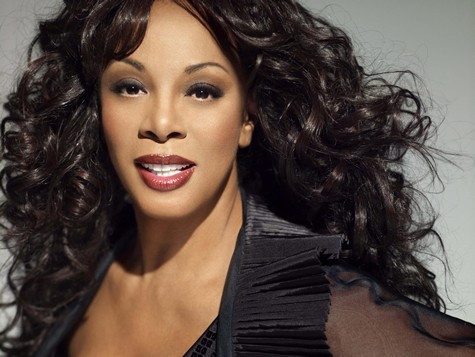“Last Dance,” performed by the iconic Donna Summer, is more than just a disco classic; it’s a timeless anthem of hope, desperation, and the bittersweet feeling of a night coming to an end. This song, famous for its dynamic structure and Summer’s breathtaking vocals, has resonated with audiences for decades. Let’s delve into the lyrical depth and musical brilliance that makes “Donna Summer’s Last Dance” so unforgettable.
The Cinematic Birth of a Disco Anthem
“Last Dance” gained prominence as the show-stopping musical number in the 1978 disco film Thank God It’s Friday. In the movie, Donna Summer portrays Nicole Sims, an aspiring singer desperately seeking her big break. The narrative cleverly weaves the song into the storyline: Nicole, after persistent attempts, finally convinces a reluctant DJ to let her perform as a last-minute filler. The song she chooses is “Last Dance,” and as the music unfolds, so does her star power, captivating the entire disco and solidifying her place for the night. This cinematic introduction perfectly encapsulates the song’s themes of opportunity and making the most of the present moment.
Decoding the Lyrics: Desperation and a Fleeting Chance at Romance
The lyrics of “Last Dance” are deceptively simple yet emotionally charged. The song opens with a slow, melancholic introduction where Summer’s voice conveys vulnerability and longing.
Last dance
Last dance for love
Yes, it’s my last chance
For romance tonight
These opening lines immediately set a tone of urgency and finality. It’s not just about any dance; it’s the last dance, the final opportunity for connection before the night ends. The singer isn’t simply looking for a dance partner, but for “romance,” implying a deeper desire for connection and perhaps love. The lyrics continue to emphasize this need for closeness and support:
I need you by me
Beside me, to guide me
To hold me, to scold me
‘Cause when I’m bad I’m so, so bad….
This section reveals a yearning for intimacy and acceptance. The lines suggest a need for someone to be present, supportive, and even corrective – highlighting a complex emotional landscape beyond just simple seduction. The desperation is palpable; this isn’t a casual invitation, but a plea born from the awareness that time is running out.
Musical Structure: A Journey from Ballad to Disco Fever
One of the defining features of “Last Dance” is its masterful musical arrangement. The song is structured in three distinct parts, mirroring an emotional journey. It begins as a slow, soulful ballad, emphasizing the lyrical desperation. This deliberate pacing allows the listener to fully absorb the emotional weight of the lyrics before transitioning into the energetic disco rhythm that the song is known for.
As the beat picks up, the tempo shifts dramatically, unleashing the iconic disco groove. The lyrics then transition to the repetitive and infectious chorus:
So let’s dance the last dance
Let’s dance the last dance
Let’s dance this last dance tonight
This repetition, layered over the driving disco beat, creates an atmosphere of both exhilaration and urgency. It’s a call to seize the moment, to lose oneself in the dance before the opportunity vanishes.
Crucially, the song includes a brief but significant B section, often omitted in shorter radio edits:
I can’t be sure
That you’re the one for me
But all that I ask
Is that you dance with me….
This bridge is pivotal. It elevates the song beyond a simple dance invitation, revealing a deeper vulnerability and honesty. The singer acknowledges uncertainty about the future, about finding “the one,” but in the present moment, all that matters is the connection, the dance itself. This nuanced emotional layer is what distinguishes “Last Dance” from typical disco tracks and contributes to its enduring appeal.
The song then cleverly returns to the slow ballad section, repeating the opening lyrics. This cyclical structure can be interpreted as a reflection of the cyclical nature of hope and desire, or perhaps a musical depiction of the singer hoping the “last dance” will lead to something more lasting. Finally, the song explodes back into the high-energy disco tempo, culminating in Donna Summer’s legendary high note, a vocal climax that perfectly mirrors the emotional and musical journey of the song.
Donna Summer’s Vocals: A Masterclass in Performance
Donna Summer’s vocal performance in “Last Dance” is nothing short of extraordinary. Her ability to transition seamlessly between the vulnerable, emotive ballad sections and the powerful, soaring disco sections showcases her incredible vocal range and control. She imbues the lyrics with a depth of emotion, conveying both desperation and exhilaration with equal conviction. Her iconic high note at the song’s climax is a testament to her vocal prowess and remains one of the most celebrated moments in disco history.
The Lasting Legacy of “Last Dance”
“Last Dance” solidified Donna Summer’s status as the “Queen of Disco” and remains one of her signature songs. Its unique structure, emotionally resonant lyrics, and Summer’s powerhouse vocals have ensured its place in music history. Beyond its disco origins, “Last Dance” transcends genre, becoming a beloved song for its exploration of universal themes of love, loss, and seizing the moment. It’s a testament to Donna Summer’s artistry and the enduring power of a truly great song that continues to fill dance floors and touch hearts today.





